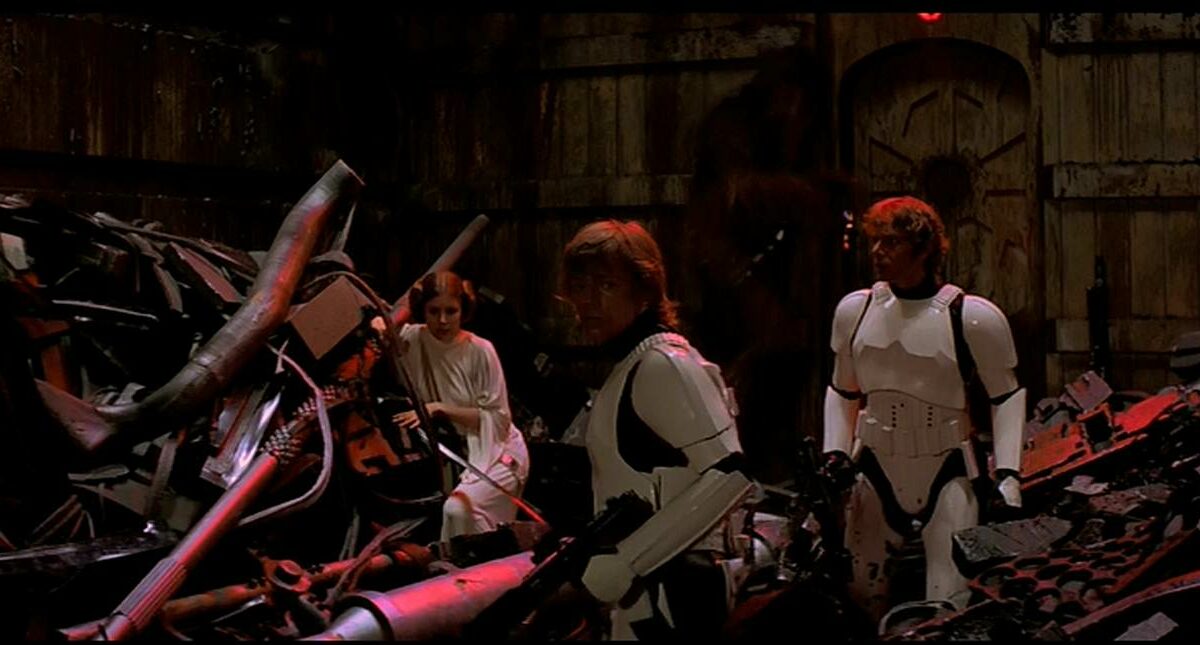Content production becomes a brand-building machine when you overlay the matrix of Primal Branding®. The role of the Chief Content Officer is not only to outline the communications that help build usability and desire, but to help build the larger Brand story of what we want to become.
Robert Rose, chief strategy advisor at CMI, advises content creators to look at how Hollywood develops an episodic TV show season. The showrunner and writing team conceive main storyline, subplots, and how to break it all down into smaller stories or episodes.
A similar approach is to look at how producers develop digital games — intentionally building relatable sequences that gamers can replay and post themselves.
We love this idea.
(For more on that, executive producer Derral Eves explains the content strategy behind promoting his hit streaming series “The Chosen” in his book “The YouTube Formula” (detailed in Chapter 18). His approach resulted in the largest media crowdfund raise in history — over $10 million. And an audience of over 500 million.)
However. No simple rerouting of content will achieve true Brand value without your larger brand story at play. The key is to embed Primal Code® in your Brand narrative — your creation story, creed, icons, rituals, lexicon, nonbelievers and leader.
In other words, where you’re from or how you got here (your creation story), your purpose or intention (creed), rituals (your purpose or beliefs in action), the words that differentiate your group (lexicon), acknowledge the people who don’t “get” you (nonbelievers) and identify your leaders.
Example.
Let’s take the first piece of Primal Code, the creation story. Your creation story can be on the back of your package, posted in your descriptor on Amazon.com or on LinkedIn and Wikipedia — or you can turn your backstory into a film, like Facebook did with The Social Network. The Defiant Ones outlined the origin story behind Beats By Dre and USC’s Iovine And Young Academy. Ford v. Ferrari was not sponsored by either Ford or Ferrari (as far as we know), but certainly supplied a lively introduction to both. In other words, your creation story can run anywhere your audience is on social, digital or traditional media.
Some people yawn and allege that no one cares about history, much less how your company came to be. They couldn’t be more wrong.
The creation story is your front door. One of the first things people ask when they see something they like is, “Where’d that come from?” “Where’d you find that?” If your front door is open, people walk right in.
Think of it this way: your creation myth sets up your reason for being. It’s your legacy. Without the challenge presented in your creation myth, the subsequent quest that follows has no reason for being.
Here are some creation stories that we have encountered in working with Brands:
- Extra fine Merino wool is literally the Golden Fleece that gave us the mythical Jason and the Argonauts
- The Maxwell House theme line Good to the last drop was written by a President of the United States
- Keurig (allegedly) was cofounded by the guy who once owned ZigZag rolling papers (ZigZag performed at Woodstock)
The amount of content that can be created from just this single piece of Primal Code — the creation story — is unending. Spread your mythos wherever your audience happens to be: on your website, YouTube, Facebook, TikTok, Instagram, LinkedIn, X, press releases, The New York Times, Hollywood Reporter, Discord, whatever media seem relevant to your audiences across social, digital and traditional channels.
Primal Branding becomes a strategic, structured process for content creation. It begins with creating content around the Creation Story, then leads into the six other pieces of Primal Code: Creed, Icons, Rituals, Lexicon, Nonbelievers and Leader.
Happy news. If audiences are surrounded with the seven pieces of Primal Code embedded across your communications, your Brand story will be transmitted into the world authentically and organically. Best customers will fit your content into their own story arc, building a self-propelled story circle.
After all, you’re not really in command of your story; people are.
Using Primal Code strategically as outlined above, helps align content to a central vision. Your content becomes intentionally Brand-building.
“Seeing your big picture in a timeline provides a good framework for content planning. Set monthly themes to make sure you are paying attention to seasonal customer needs while covering all the different areas of your organization and facets of your brand,” suggests Patty Radford Henderson, Annum founder and CEO. Annum’s marketing planning software not only consolidates disconnected marketing plans within a single strategic lens, but Annum provides a fuller perspective on which content fits where.
Integrating your marketing calendars with software like Annum pays for itself not only by paying attention to seasonal customer needs, but by building Brand value, which has a direct impact on capital.
Based on key messages, data-driven insights, peer-to-peer feedback, User-generated content, AI-assisted content and other stories, using Primal Branding and Primal Code helps structure content strategy and production that turns meaningless products into meaningful brands.
Try it for a quarter. Before and after test metrics will help solidify your creators’ reason for being and substantiate your goals.
What could be better than that?
Contributed to Branding Strategy Insider by Patrick Hanlon, Author of Primal Branding
The Blake Project Can Help You Craft A Brand Advantage In The Strategic Brand Storytelling Workshop
Branding Strategy Insider is a service of The Blake Project: A strategic brand consultancy specializing in Brand Research, Brand Strategy, Brand Growth and Brand Education




